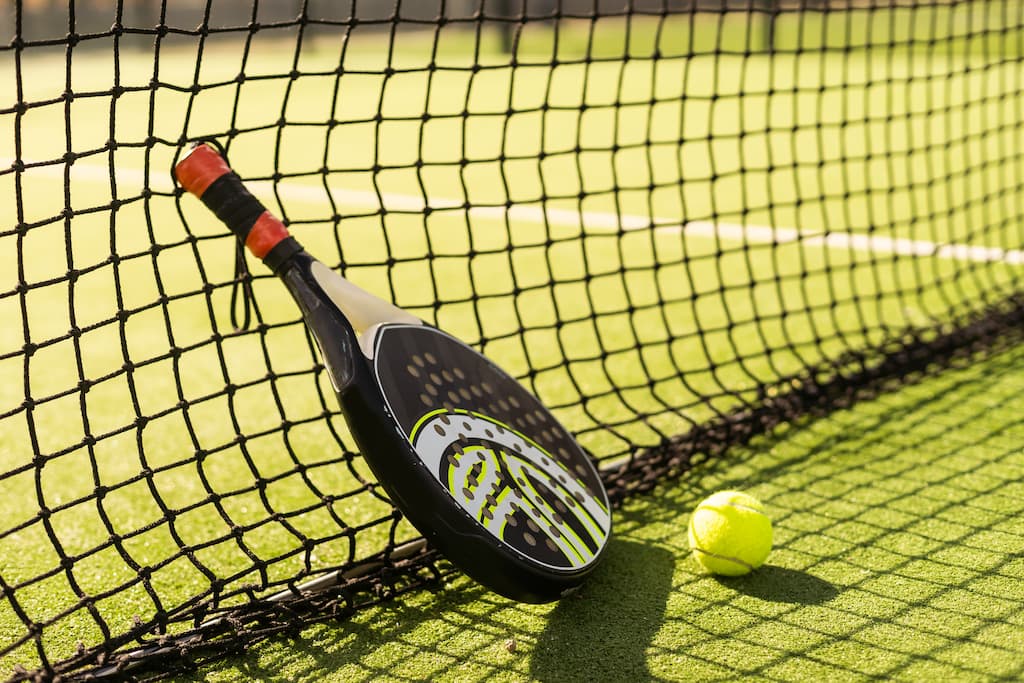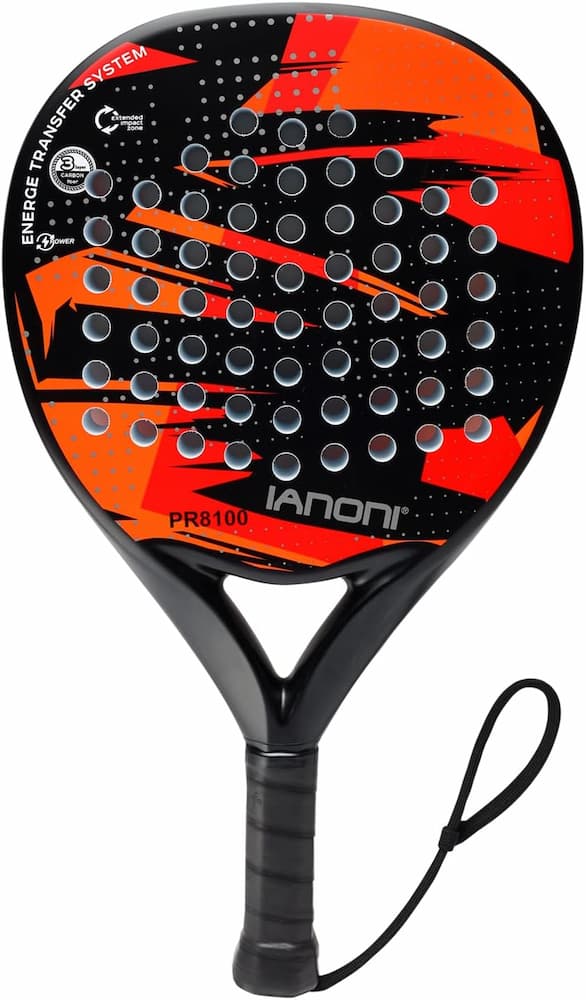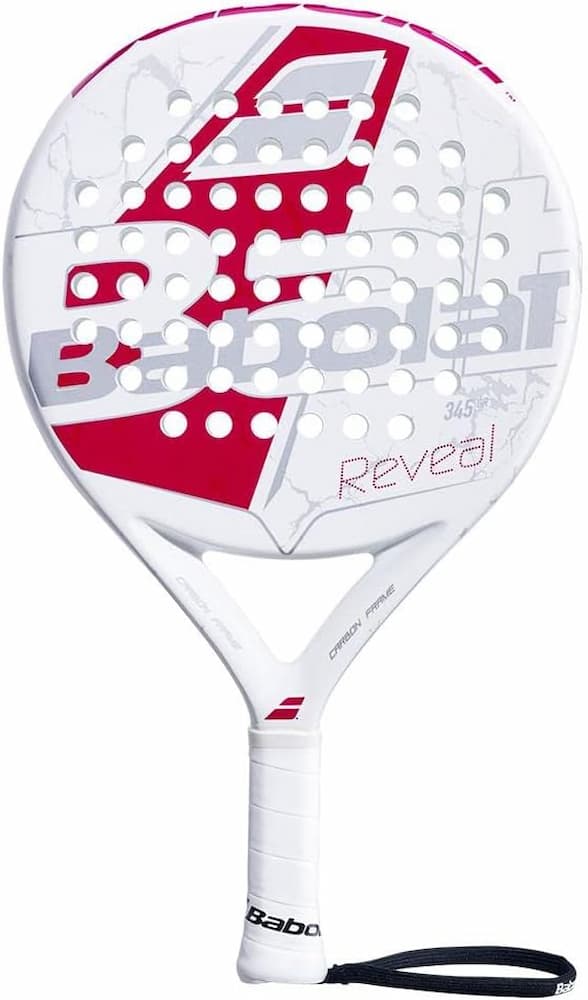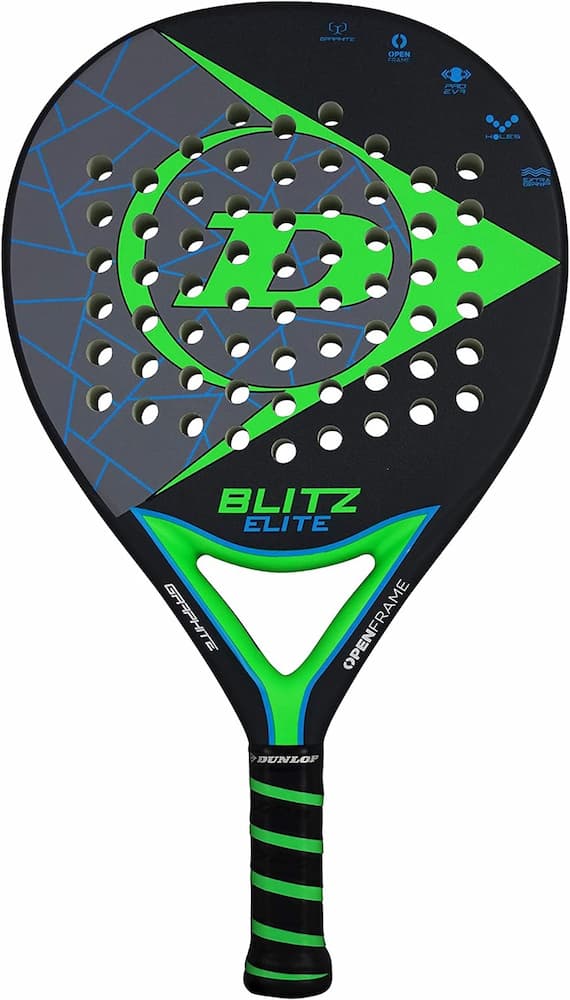Padel has gained immense popularity in recent years, with over 25 million players across 110 countries. This growth is arguably due to the flexible and friendly nature of the game, which combines the elements of tennis and squash and is accessible to players of all ages, genders, and skill levels. But before you step onto the Padel court, you need to wield one piece of equipment central to the sport: the Padel racket. Hence, a poor choice of Padel racket can mar your entire gaming experience. And our goal is to ensure that is not the case!
That said, here are our top-pick Padel rackets for you:
- GrandCow Carbon Fiber Power Padel Tennis Racket – Best for Versatility
- WLSRW Carbon Fiber Padel Racket – Best for Budget
- Babolat Reveal Padel Racket – Best for Starters
- Dunlop Sports 2021 Padel Bat – Best for Spin
- Head Speed Motion Padel Racquet – Best for Control
The Best Padel Rackets, 2023 (Popular Models and Brands)
While one could prefer to spend 500 bucks for a Padel racket that would enable them to play like Juan Lebrón Chincoa, it’s not always that easy.
The amount you spend on a racket doesn’t necessarily determine the value you’ll get. Other factors must be considered, some of which we’ll highlight as you read further.
Based on our review and on-court experience, we have selected a few Padel racket brands for each level and style. Our goal is to ensure you get the best value for any amount you spend, regardless of your level or individual preference.
Best for Versatility – GrandCow Carbon Fiber Power Padel Tennis Racket
Why is this Our Choice?
We recommend this racket because of its versatility. It is suitable for beginners, intermediate, and sometimes advanced players and offers a balanced design with a large sweet spot and 18-inch length, delivering both power and control. Its anti-slip, sweat-resistant grip is another bonus that translates to great playability.
What can you expect from this choice?
- Power: Good
- Control: Good
- Sweet spot: Large, centered sweet spot
- Maneuverability: Good
- Balance: Good
Product Specifications:
- Grip Size: 4 1/4 inches
- Material: Carbon Fiber
- Frame Material: Carbon Fiber
- Shaft Material: Carbon Fiber
- Color Options: Multiple
- Shape: Waterdrop
- Skill Level: All
- Age Range: Adult
Best for Budget – WLSRW Carbon Fiber Padel Racket
Why is this Our Choice?
We recommend WLSRW’s Carbon Fiber Padel Racket because it’s a top choice for beginners looking to spend less on the most essential features. With its round shape, this Padel racket is excellent for a defensive style and places the sweet spot toward the bottom of the frame. This design provides better control while sacrificing a bit of power, making it perfect for beginners.
What can you expect from this choice?
- Power: Low
- Control: Great
- Sweet spot: Lower on the frame
- Maneuverability: Good
- Balance: medium
Product Specifications:
- Grip Size: 4 inches
- Material: Carbon Fiber
- Frame Material: Carbon
- Shaft Material: Carbon Fiber
- Color Options: Multiple
- Shape: Round
- Skill Level: Beginner or intermediate player
- Age Range: Adult
Best for Starters – Babolat Reveal Padel Racket
Why is this Our Choice?
We pay attention to all levels of players, especially beginners who want to enjoy the game of racket from day one. That’s why we recommend this user-friendly, lightweight, and well-balanced racket. It is crafted from fiberglass and carbon fiber and provides flexibility and affordability, with a pretty large, centered sweet spot that makes it easier to hit the ball.
What can you expect from this choice?
- Power: Low
- Control: Great
- Sweet spot: Large, centered sweet spot
- Maneuverability: Good
- Balance: High
Product Specifications:
- Material: Fiberglass
- Frame Material: Carbon Fiber
- Shaft Material: Carbon Fiber
- Shape: Round
- Skill Level: Beginner
- Age Range: Adult
Best for Spin – Dunlop Sports 2021 Padel Bat
Why is this Our Choice?
We love this racket because, unlike others, it features a rough, graphite finish designed to ensure maximum ball contact, which provides greater spin with every hit.
What can you expect from this choice?
- Spin: Great
- Control: Good
- Surface: Rough
- Balance: Medium
Product Specifications
- Grip Size: 4 1/8 inches
- Materials: Graphite, foam core
- Shape: Hybrid
- Skill Level: Intermediate, Advanced
- Age Range: Adult
Best for Control – Head Speed Motion Padel Racquet
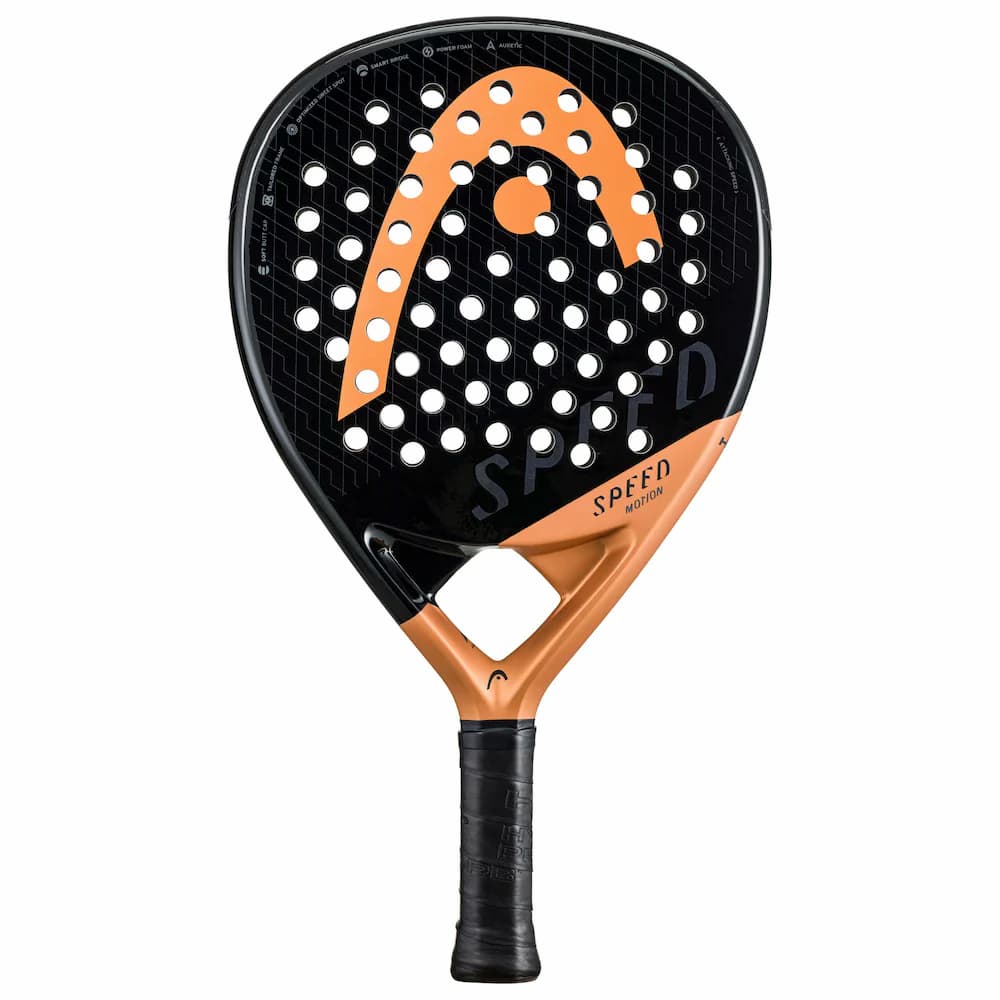
Why is this Our Choice?
With a medium balance, this racket offers the maneuverability required for fast-paced games. We recommend it for players who seek more speed, control, and accuracy.
What can you expect from this choice?
- Control: Great
- Speed: Great
- Sweet spot: Center
- Maneuverability: Good
- Balance: Medium
Product Specifications:
- Materials: Fiberglass and carbon fiber
- Weight: 12.7 ounces
- Shape: Teardrop
- Skill Level: Intermediate, Advanced
Key Factors to Consider When Choosing a Padel Racket
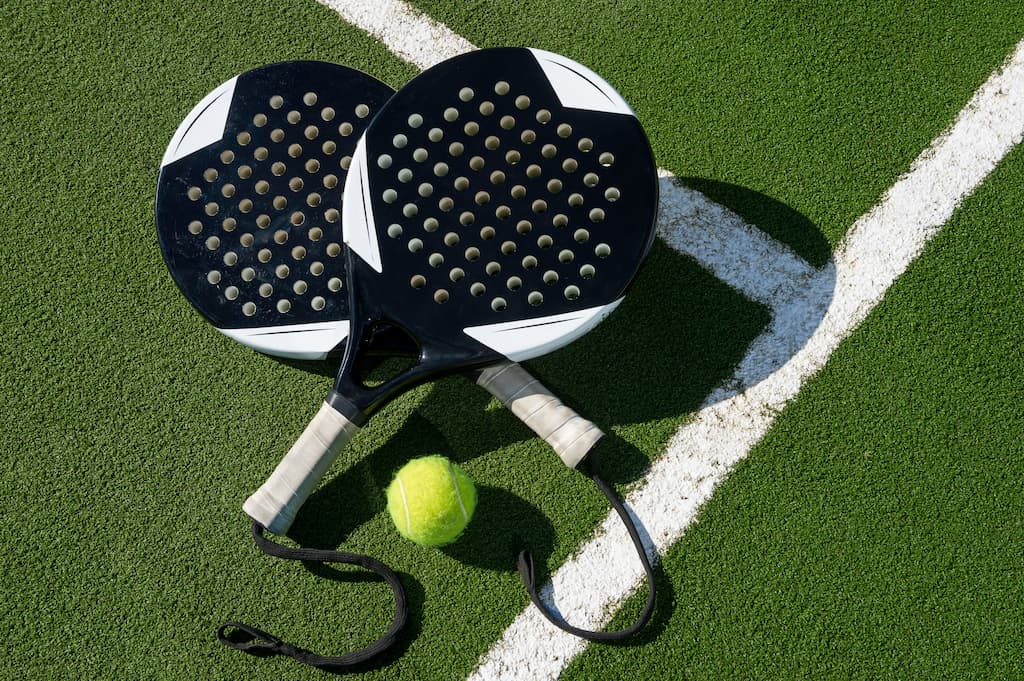
So, you’ve finally decided to hit the Padel court for the first time to slug it out with your mates, but here you are, staring at a wall of Padel rackets, wondering which one is your one-way ticket to victory. We understand that choosing the best Padel racket in such a dilemma isn’t the easiest task. But that’s why we are here to walk you through some considerations to determine the best choice.
Racket Weight
One key factor that can influence your overall game performance is the weight of your Padel racket. To better understand the racket weight’s role, let’s create an imaginary scenario with two superheroes: Thor and The Flash.
Consider your racket a sledgehammer, and you’re Thor, the god of thunder, ready to unleash some smashing power! Yes, that’s what a heavier racket feels like. The extra weight is like having a secret weapon for your smashes and adding rock-solid stability to your game. The only downside, however, is that heavier rackets can be a handful, like trying to tame a wild stallion. That’s why it takes seasoned, aggressive players (who want that extra power) to wield heavier rackets.
On the other hand, a lighter racket is more like a lightning bolt, and you’re the superhero Flash, speeding around the court. It’s like having wings on your racket, letting you swing it faster and freer than a flying bird. This makes it a fantastic choice for beginners, young guns, and anyone still in the learning phase. It feels like having training wheels on your racket. But as you level up in the game, you might want to swap those wings for a bit more muscle.
However, it’s noteworthy that whether you’re wielding Thor’s heavy hammer or a Flash-like speed racket, it’s all about finding the right tool that suits your style and proficiency.
Grip Size
Choosing the correct grip size for your Padel racket is another difference-maker during the game. A proper Padel grip size enables more efficient power transfers from your arm to the racket, creating more powerful shots and making it easier to learn new techniques.
An appropriately sized Padel racket grip helps you manage fatigue during those long gaming spells. With the right grip fit, you can maintain optimum control over shots and minimize pain experienced after hours of rallying. This can improve your confidence and performance.
Racket Balance
By “racket balance,” we mean the weight distribution across your racket, from the grip to the racket head.
The balance determines how the racket feels in your hand while in play. Padel rackets are categorized as high, low, and medium balance. Now, let’s look at these categories and discover what they mean to your playing style.
1. Low Balance
A low-balance racket has most of its weight around the grip, with a feather-light head, making it super easy to handle. That’s why these rackets are mostly recommended for beginners. Well, not exactly! Because even the pros are into low-balance rackets because of the high level of control they provide. It’s like having a magic wand in your hand, guiding the ball exactly where you want it to go. So, whether you’re just starting or already a Padel pro, low-balance rackets have your back!
2. High Balance
Most weight lies in the racket head for high-balance rackets, which translates to added speed and greater power up there. But here’s the catch: Using high-balance rackets could mean sacrificing a bit of control and comfort. That’s why they’re often recommended for the pros who can handle the trade-off. Using high-balance rackets is more like owning a sports car: You get the thrill of speed, but you must also master the steering.
3. Medium Balance
Medium-balance rackets offer a perfect middle ground between power and control. They are ideal for intermediate players and make for a fantastic upgrade if you’ve been using a low-balance racket and want to step up your game.
Racket Hardness
Another top consideration for choosing the best Padel rackets is how soft or hard they feel! And whether you opt for a hard or soft racket, it’s crucial to note that each comes with its own advantages.
- Soft Padel Rackets: Soft rackets are like speed demons on the court, making them a top choice for beginners. They’re fantastic for players who prefer a defensive style because they absorb your opponent’s shots and bounce them back with lightning speed, thanks to their elasticity. They also deal with vibrations better, making them the best alternative for avoiding injuries.
- Hard Padel Rackets: These rackets deliver tremendous power through effective recoil. However, you must bring your A-game in terms of technique to truly unleash their potential.
Materials
The material used for a Padel racket largely determines how it performs in a match. But the question is, what are these materials, and how exactly do they impact performance (power, control, and maneuverability)?
The three primary materials often used in Padel rackets are carbon fiber, fiberglass, and EVA rubber, sometimes combined. A carbon fiber racket delivers great power, control, and maneuverability, although it can be less forgiving for off-center hits. Fiberglass rackets offer increased flexibility and are perfect for players looking to improve ball control and comfort.
The average racket consists of three main parts: an external frame, a core, and a surface. Frames are constructed with materials like fiberglass, carbon fiber, or Kevlar. The core is typically made of rubber or foam, and the surface may feature an aluminum, fiberglass, or carbon fiber material.
If you opt for a racket with a fiberglass frame and surface, it may not be as robust or durable as carbon fiber. Still, it is cheaper and offers a soft, comfortable feel due to its springy nature, making it easier to hit.
Carbon fiber is the choicest material for an intermediate or advanced Padel racket. It’s more durable and more robust, ensuring your racket lasts longer on the court.
While rubbers and fibers are the go-to materials for crafting Padel rackets, other substances can be in the mix. Think graphite, aluminum, titanium, Kevlar, and more. Each of these materials brings unique traits to the game, like reinforcing the racket frame or adding stiffness to the lower layers of the racket face. The possibilities are endless, and technology keeps churning out innovations yearly to amp up our racket and equipment performance.
Racket Shape
The shape of a racket dictates the location of its sweet spot. A Padel racket “sweet spot” is the optimal ball-hitting area to achieve greater efficiency in the stroke, both in control and power. The top three racket shapes to pick from are diamond, round, and teardrop. Each shape comes with specific performance traits tailored to different players. So, whether you’re a beginner or a seasoned player seeking more power, better control, or a mix of both, there’s a racket shape that suits your game.
Round-Shaped Rackets
The most exciting feature of round rackets is the large sweet spot in the center of the hitting surface. That’s why hitting the ball is much easier with a round racket than diamond or teardrop-shaped ones. Beginners or any level of player seeking extra control at the expense of some power should consider this an option.
Diamond-Shaped Rackets
A diamond-shaped racket benefits advanced players whose styles are more aggressive.
While rackets with a diamond shape can be a bit challenging to handle and might not provide the same level of control as a round racket, they bring a big bonus to the table: A hefty dose of power and speed, especially for those killer volleys, bandejas, and smashes. These rackets have a smaller sweet spot near the tip of the hitting surface.
Teardrop-Shaped Rackets
Players who want to balance speed and control can rely on teardrop-shaped Padel rackets to achieve that goal. These rackets are more forgiving than diamond-shaped ones and bring more power to the game than the round ones.
Surface Texture
Another crucial factor you want to consider when choosing the best Padel rackets is the surface texture!
Padel racket surfaces are fundamentally smooth or rough. A rough surface offers extra grip on the ball, leading to more spin on your shots. However, it may not give as much bounce off the racket face as the smooth surface rackets do.
It’s worth noting that some players aren’t big fans of the added spin that a rough surface can generate. Hence, they may opt for smooth-surface rackets, which generate more shot power with less spin.
Maintenance and Longevity
Caring for your Padel racket is both fulfilling and vital for its longevity. Simple steps like cleaning the dirt and sweat and storing it properly extend its lifespan, saving you from frequent replacements. This maintenance not only keeps your racket in top shape but also enhances on-court performance by optimizing your reaction times during games.
Tips to Care for Your Padel Racket and Improve its Longevity
- Avoid exposing your Padel tennis rackets to extreme weather, such as humid, cold, or hot. Excessive heat can affect your racket’s performance and lifespan. Freezing temperatures can make your racket harder and more susceptible to damage, including breaking and cracking. We recommend buying a Padel bag or backpack with specific thermal compartments for Padel rackets to reduce extreme weather exposure. Secondly, avoid playing when the sun is at its peak or leaving your racket outside overnight when it’s freezing!
- Replace your racket grip regularly.
- Use racket protectors CORRECTLY.
- Try not to let your racket hit the ground.
Testing and Trying Rackets
Like test-driving a car, we always encourage trying a few rackets before making the final call. We can write you a 1000-page theory, but you must still be practical to make the best choice. Of course, you don’t want to end up with a new Padel racket that doesn’t PRACTICALLY suit your style. That’s why trying out your racket is essential.
Don’t be shy if you find it challenging to choose the perfect Padel racket for your style! You can always ask your fellow players or even the pros for advice. They’ve been down this racket road before and can offer some wisdom.
Frequently Asked Questions
Why is Padel not an Olympic Sport?
Although Padel has garnered over 25 million players worldwide and has met some criteria required by the Olympic Committee for possible inclusion, it is not yet an Olympic sport for one primary reason: Less than 60 male-side countries are known to have a Padel association. Based on the Olympic requirements, a minimum of 75 male-side national federations should have a Padel association for the sport to qualify.
Is Padel the Same as Racquetball?
While both are racket sports with similar rules and gameplay, one stand-out difference is that a Padel court includes a net like a tennis court, something you don’t get to see in a racquetball court.
Is it Difficult to Play Padel?
Padel is considered easy to learn since it combines action with fun and social interaction. Most beginners get the basics within the first hour of playing. However, truly mastering the game requires consistent practice over an extended period.
What Racket Does Chingotto Use?
Federico Chingotto is renowned for using the Bullpadel Vertex 03 2023 racket and has been quite successful with it. This racket brand is designed for advanced or professional players.
Why are Padel Rackets Expensive?
While some rackets are less expensive, one important factor that makes expensive rackets what they are is their material makeup. For instance, high-quality Padel rackets (for professional games) are usually produced with 100% carbon, making them more expensive. Another factor that determines the price of a racket is the long production processes, coupled with the design and technologies being used.
When Should I Replace my Padel Racket?
Padel rackets have shorter lifespans than tennis rackets and can work optimally for just about 12 months. We recommend replacing your Padel racket once you notice a loss of power and momentum. This can happen due to reduced racket stiffness or cracked frame from usage and aging.

